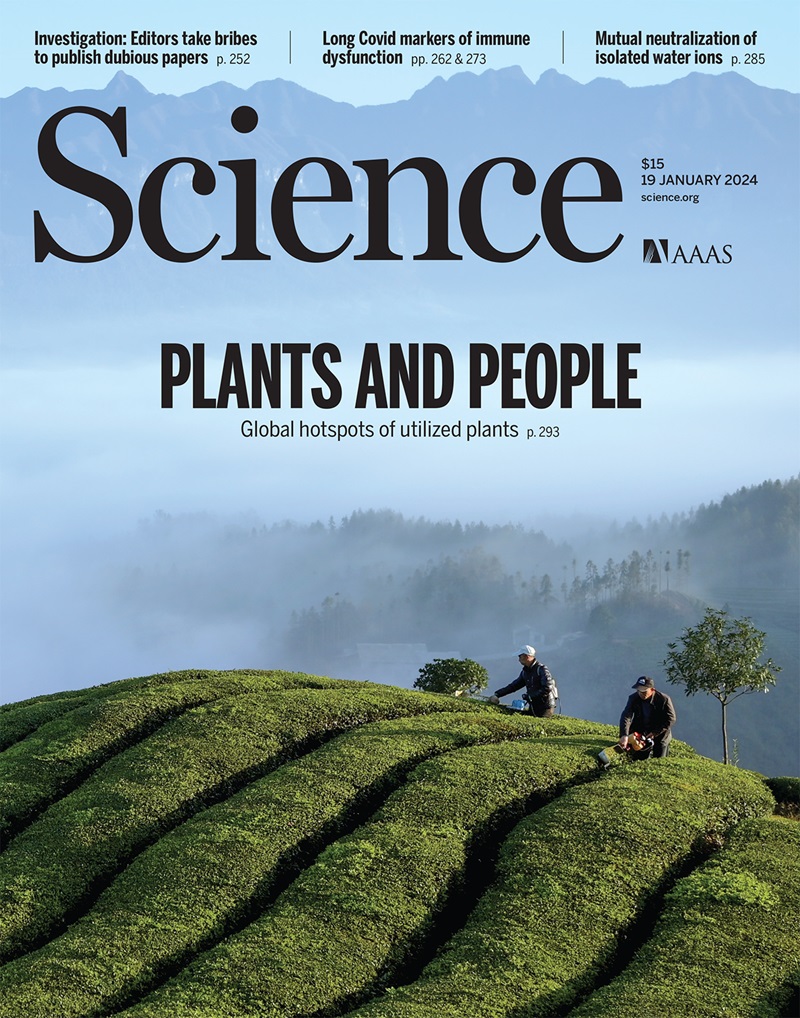Bacterial pathogen deploys the iminosugar glycosyrin to manipulate plant glycobiology
IF 44.7
1区 综合性期刊
Q1 MULTIDISCIPLINARY SCIENCES
引用次数: 0
Abstract
The extracellular space (apoplast) in plants is a key battleground during microbial infections. To avoid recognition, the bacterial model phytopathogen Pseudomonas syringae pv. tomato DC3000 produces glycosyrin. Glycosyrin inhibits the plant-secreted β-galactosidase BGAL1, which would otherwise initiate the release of immunogenic peptides from bacterial flagellin. Here, we report the structure, biosynthesis, and multifunctional roles of glycosyrin. High-resolution cryo–electron microscopy and chemical synthesis revealed that glycosyrin is an iminosugar with a five-membered pyrrolidine ring and a hydrated aldehyde that mimics monosaccharides. Glycosyrin biosynthesis was controlled by virulence regulators, and its production is common in bacteria and prevents flagellin recognition and alters the extracellular glycoproteome and metabolome of infected plants. These findings highlight a potentially wider role for glycobiology manipulation by plant pathogens across the plant kingdom.
细菌病原体利用亚氨基糖苷操纵植物糖生物学
植物的胞外空间(外质体)是微生物感染的关键战场。为避免被识别,本文将细菌模式植物病原体丁香假单胞菌(Pseudomonas syringae pv。番茄DC3000产生糖苷。糖苷抑制植物分泌的β-半乳糖苷酶BGAL1,否则会启动细菌鞭毛蛋白释放免疫原性肽。在这里,我们报道了糖苷的结构、生物合成和多功能作用。高分辨率低温电子显微镜和化学合成表明,糖苷是一种具有五元吡啶环和水合醛的亚糖,模拟单糖。糖syrin的生物合成受毒力调节因子控制,其在细菌中普遍产生,阻止鞭毛蛋白识别并改变受感染植物的细胞外糖蛋白组和代谢组。这些发现强调了植物病原体在整个植物界对糖生物学操纵的潜在更广泛的作用。
本文章由计算机程序翻译,如有差异,请以英文原文为准。
求助全文
约1分钟内获得全文
求助全文
来源期刊

Science
综合性期刊-综合性期刊
CiteScore
61.10
自引率
0.90%
发文量
0
审稿时长
2.1 months
期刊介绍:
Science is a leading outlet for scientific news, commentary, and cutting-edge research. Through its print and online incarnations, Science reaches an estimated worldwide readership of more than one million. Science’s authorship is global too, and its articles consistently rank among the world's most cited research.
Science serves as a forum for discussion of important issues related to the advancement of science by publishing material on which a consensus has been reached as well as including the presentation of minority or conflicting points of view. Accordingly, all articles published in Science—including editorials, news and comment, and book reviews—are signed and reflect the individual views of the authors and not official points of view adopted by AAAS or the institutions with which the authors are affiliated.
Science seeks to publish those papers that are most influential in their fields or across fields and that will significantly advance scientific understanding. Selected papers should present novel and broadly important data, syntheses, or concepts. They should merit recognition by the wider scientific community and general public provided by publication in Science, beyond that provided by specialty journals. Science welcomes submissions from all fields of science and from any source. The editors are committed to the prompt evaluation and publication of submitted papers while upholding high standards that support reproducibility of published research. Science is published weekly; selected papers are published online ahead of print.
 求助内容:
求助内容: 应助结果提醒方式:
应助结果提醒方式:


